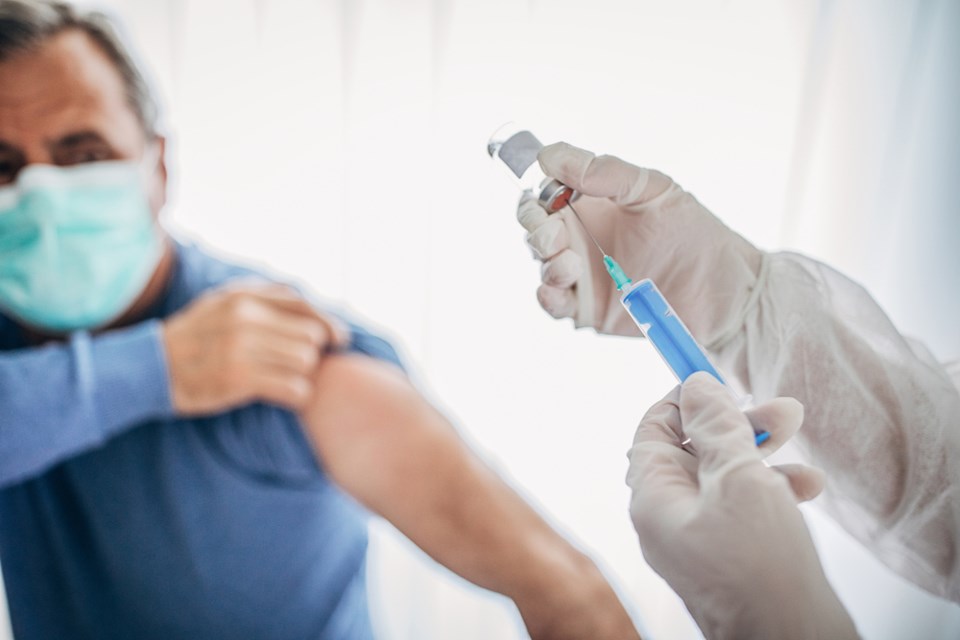A study of COVID-19 vaccination acceptance and resistance among youth with different sexual and racial backgrounds yielded surprising results, said Michel Duffy, director of Education and Research at Out Boulder County.
The survey — conducted Aug. 19 through Oct. 31 — indicates that economic status and race make a big impact on vaccination rates and levels of acceptance. The results also show that outreach efforts to reach lower income families to counter vaccine hesitancy seems to be working, Duffy said.
“I was surprised by the degree of difference in the vaccination rates of White, non-LGBTQ+ (Lesbian, Gay, Bisexual, Transgender and Queer) respondents,” Duffy said. “There were much lower than White and BIPOC (People of Color) LGBTQ+BIPOC respondents.”
“I believe it demonstrates an interesting shift from the commonly held understanding at the beginning of the pandemic of vaccine hesitancy being higher among underserved communities,” they said. It also “speaks to the intentional efforts made by Out Boulder County, Centro AMISTAD, and our community partners to address inequities in vaccination and ensure that LGBTQ+ and BIPOC individuals benefited from direct outreach and education efforts in our community.”
Out Boulder County in partnership with El Centro AMISTAD and Unwoven Ventures with the leadership of LGBTQ+ and BIPOC youth created what may be the nation’s first LGBTQ+ and BIPOC youth-led survey on COVID-19 vaccination uptake, acceptance, hesitancy, and resistance, the news release states.
There were 420 respondents who met the criteria for inclusion in the survey, the news release states. It consisted of 37 questions, was offered in both English and Spanish, and targeted youth ages 12 to 17 and young adults between the ages of 18 to 24. The survey was advertised by the staff and interns at Out Boulder County and El Centro AMISTAD through social media, direct marketing at events, outreach to partnering organizations, radio, school GSA networks, as well as yard signs in several locations, the news release states.
The survey was led by LGBTQ+ and BIPOC youth because they are too often ignored by the medical establishment and society, said Mardi Moore, executive director of Out Boulder County which provides advocacy, services, programs and support to LGBTQ+ communities in Boulder County and beyond. “It was important to Out Boulder County and our partners to have youth lead the survey and to elevate voices in these too often ignored communities,” Moore said.
“Understanding their views and attitudes toward COVID-19 vaccination is crucial to managing and ending this pandemic,” Moore said in the news release.
A key finding of the study is that economically disadvantaged respondents have lower rates of vaccination overall. Economic disadvantage made a much more significant impact on LGBTQ vaccination rates as compared to non-LGBTQ vaccination rates, the news release states.
Among the key findings:
- 40% of economically disadvantaged LGBTQ young adults ages 18-24 are vaccinated, whereas the vaccination rates jump to 86% for those who are economically resourced. 70% of economically disadvanted LGBTQ youth ages 12-17 are vaccinated compared to 81% who are economically resourced.
- All non-LGBTQ respondents ages 18-24, whether economically disadvantaged or resources, have a 78% vaccination rate. For youth ages 12-17, economically disadvantaged non-LGBTQ respondents are vaccinated at a slightly higher rate of 61% than those who are economically resourced at a rate of 58%.
- For financially disadvantaged respondents ages 12-17, BIPOC youth reported a 68% vaccination rate compared to 57% for White respondents. For ages 18-24, the difference is even greater at 80% of BIPOC respondents compared to 27% of White respondents.
While economically disadvantaged respondents revealed lower vaccination rates overall, they reported high rates of vaccine acceptance — 50% vs 30% — and hesitancy — 23% vs 11% — and lower vaccine resistance — 27% vs 59%, than those who are financially resourced, the news release states.
Another important finding is that BIPOC respondents have a significantly higher rate of vaccine acceptance and lower vaccine resistance than White respondents. This trend also holds true for Hispanic/Latinx respondents in comparison to non-Hispanic/Latinx respondents, the news release states. White, non-LGBTQ respondents reported the lowest vaccination rate compared to both LGBTQ and Non-LGBTQ BIPOC, as well as White LGBTQ respondents.
Addressing parent-related concerns may be the biggest hurdle since youth must have parental approval to get the vaccine at this point, Duffy said. Some survey respondents said, “My parents don’t want me to get the vaccine,” according to Duffy..
“This will require engagement and educational outreach from additional community partners, especially those serving financially disadvantaged families,” Duffy said.



